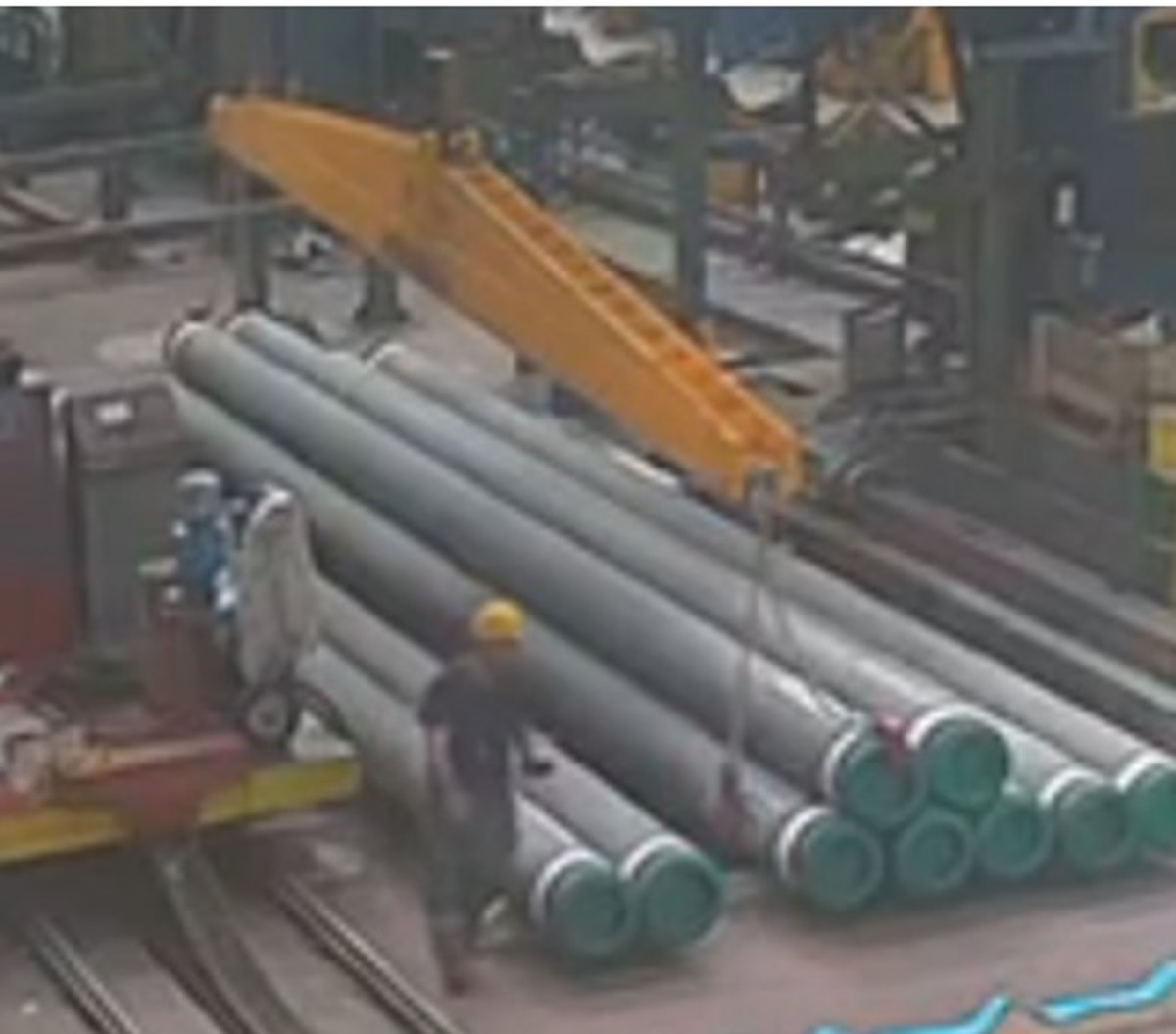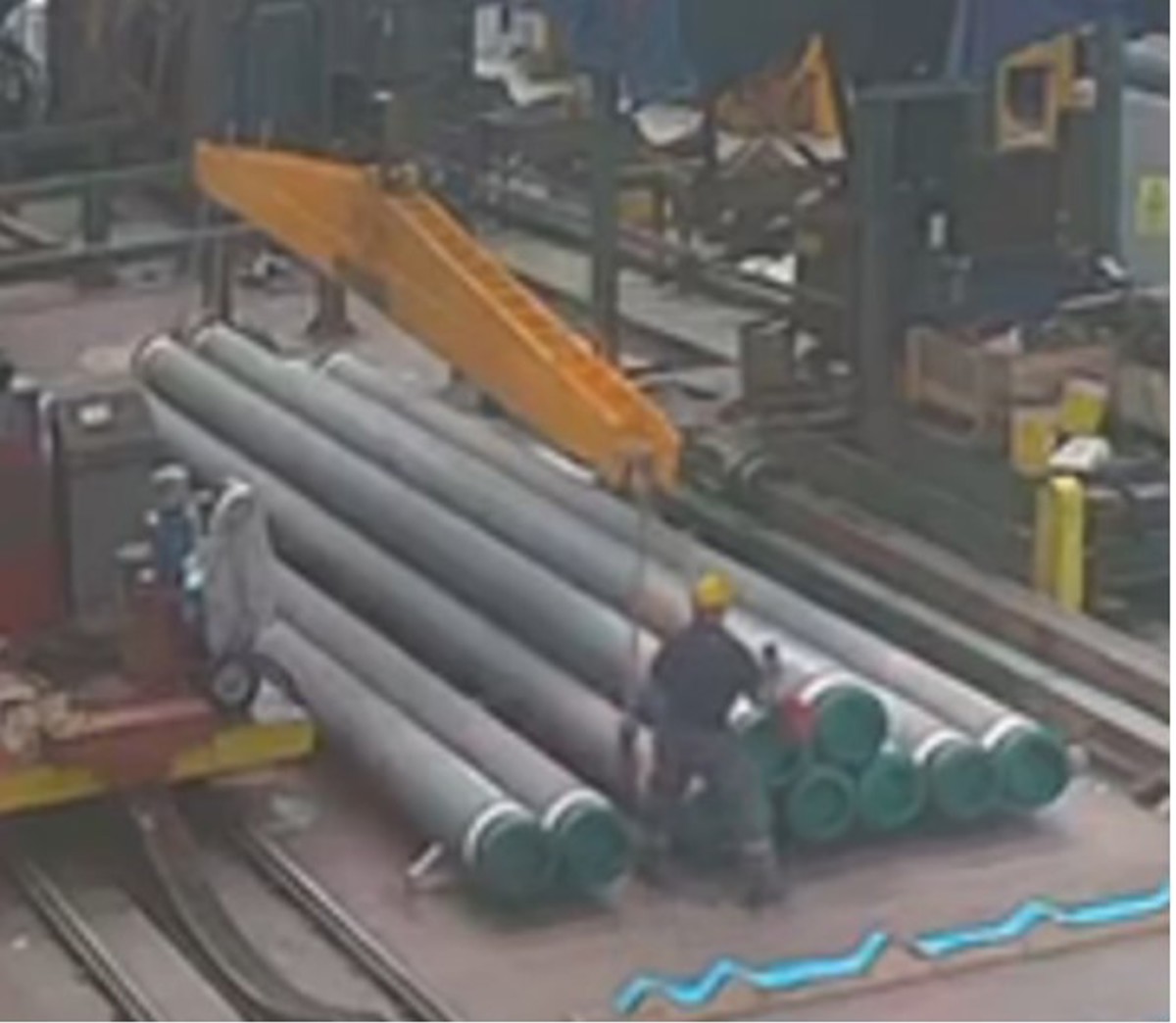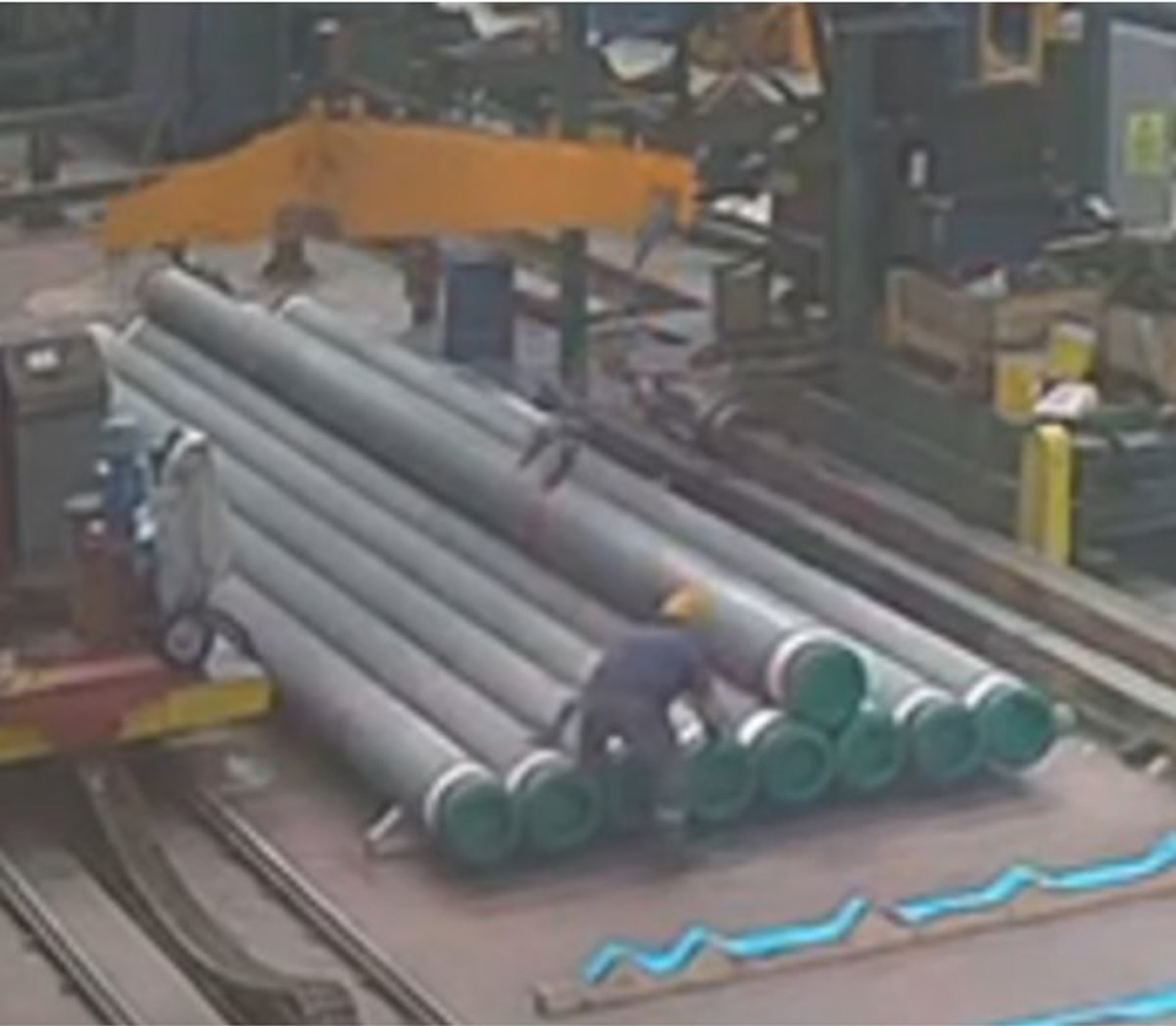LTI: Foot trapped between pipes
- Safety Flash
- Published on 30 November 2022
- Generated on 11 December 2025
- IMCA SF 27/22
- 2 minute read
Jump to:
During pipe handling operations a rigger positioned himself at the pipe’s bottom layer gap.
What happened?
A pipe from the upper layer rolled down into the space on the bottom layer, trapping the riggers left foot resulting in a Lost Time Injury (LTI).
What went wrong?
The worker walked towards the pipe stack. The pipe on the top layer was still connected to the gantry crane. He stepped forward into the gap on the bottom layer. At the same time, the pipe stack shifted, trapping his ankle, causing an LTI. The sequence of events is illustrated here:
What were the causes?
- This was a repetitive task which had been ongoing for two months (loading and unloading 2000 pipejoints during this period).
- There were sufficient team members on site, but the other riggers were involved in another task elsewhere. The crew person involved decided to continue the task on his own to get the job done.
- Temporary wedges were available during the pipe handling operations. The pipe stacking area, however, was not set up with permanent wedges or spacers to ensure the pipes could not roll.
- A stacking plan and a risk assessment were available, but neither were being followed at the time.
- Inspections and audits had failed to verify controls and preventive measures.
- Human factors – risk perception and competency of personnel involved in operations.
Related Safety Flashes
-
IMCA SF 27/20
15 September 2020
-
-
IMCA SF 04/15
20 March 2015
-
IMCA SF 19/16
12 July 2016
-
IMCA SF 08/06
22 June 2006
IMCA Safety Flashes summarise key safety matters and incidents, allowing lessons to be more easily learnt for the benefit of the entire offshore industry.
The effectiveness of the IMCA Safety Flash system depends on the industry sharing information and so avoiding repeat incidents. Incidents are classified according to IOGP's Life Saving Rules.
All information is anonymised or sanitised, as appropriate, and warnings for graphic content included where possible.
IMCA makes every effort to ensure both the accuracy and reliability of the information shared, but is not be liable for any guidance and/or recommendation and/or statement herein contained.
The information contained in this document does not fulfil or replace any individual's or Member's legal, regulatory or other duties or obligations in respect of their operations. Individuals and Members remain solely responsible for the safe, lawful and proper conduct of their operations.
Share your safety incidents with IMCA online. Sign-up to receive Safety Flashes straight to your email.


